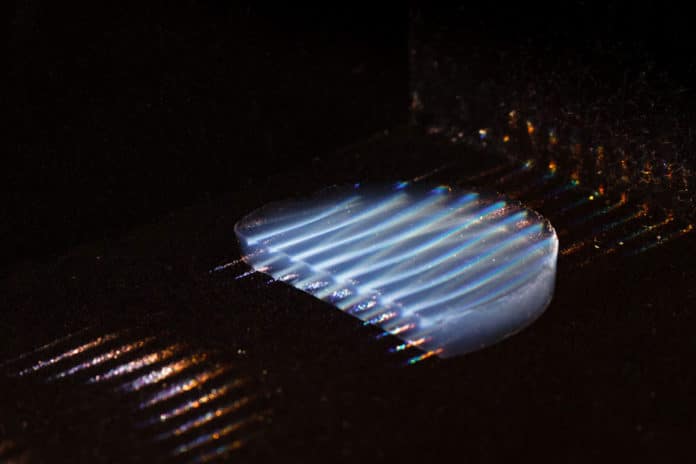Heat at intermediate temperatures (120–220 °C) is in noteworthy interest in both industrial and domestic sectors, for example, water and space heating, steam generation, sterilization, and other industrial procedures.
Harnessing heat from solar energy at these temperatures, be that as it may, requires expensive optical and mechanical components to concentrate the dilute solar flux and suppress heat losses. In this manner, accomplishing high temperatures under unconcentrated sunlight remains a challenge.
In a new study, MIT scientists have developed a new system that generates much higher temperatures than conventional solar collectors do. It is transparent enough that anyone can barely see it could open numerous new uses for solar heat.
The material, i.e., a solar receiver can reach over 265 °C under ambient conditions without optical concentration.
Scientists used a new kind of aerogel- composed of air, with a structure made of silica- to allow passage of sunlight easily and to block solar heat from escaping.

Evelyn Wang, professor and head of the Department of Mechanical Engineering, said, “The key to efficient collection of solar heat, is being able to keep something hot internally while remaining cold on the outside. One way of doing that is using a vacuum between a layer of glass and a dark, heat-absorbing material, which is the method used in many concentrating solar collectors but is relatively expensive to install and maintain. There has been great interest in finding a less expensive, passive system for collecting solar heat at the higher temperature levels needed for space heating, food processing, or many industrial processes.”
“Aerogels usually had limited transparency to visible light, with around a 70 percent transmission level. Developing a way of making aerogels that are transparent enough to work for solar heat collection was a long and difficult process involving several researchers for about four years. But the result is an aerogel that lets through over 95 percent of incoming sunlight while maintaining its highly insulating properties.”
Scientists made such efficient aerogels by using proper ratios of materials involved in the process. The materials were prepared by mixing a catalyst with grains of a silica-containing compound in a liquid solution, forming a kind of gel, and then drying it to get all the liquid out, leaving a matrix that is mostly air but retains the original mixture’s strength.
Producing a mix that dries out much faster than those in conventional aerogels, they found, created a gel with smaller pore spaces between its grains, and that therefore scattered the light much less.
During an experiment, the material was able to reach and maintain a temperature of 220 C, in the middle of a Cambridge winter when the outside air was below 0 C.
Lin Zhao, an MIT graduate student, said, “the basic function of the aerogel layer as a greenhouse effect. The material we use to increase the temperature acts like the Earth’s atmosphere does to provide insulation, but this is an extreme example of it.”
Wang said, “For most purposes, the passive heat collection system would be connected to pipes containing a liquid that could circulate to transfer the heat to wherever it’s needed. Alternatively, for some uses, the system could be connected to heat pipes, devices that can transfer heat over a distance without requiring pumps or any moving parts.”
According to scientists, this aerogel-based solar heat collector could directly replace the vacuum-based collectors used in some existing applications.
Wang said, “Because that is a batch process rather than a continuous one that could be used in roll-to-roll manufacturing, it could limit the rate of production if the system is scaled up to industrial production levels. The key to scaling up is how we can reduce the cost of that process. But even now, a preliminary economic analysis shows that the system can be economically viable for some uses, especially in comparison with vacuum-based systems.”
The research team included research scientist Bikram Bhatia, postdoc Sungwoo Yang, graduate student Elise Strobach, instructor Lee Weinstein and postdoc Thomas Cooper. The work was primarily funded by the U.S. Department of Energy’s ARPA-E program.
The findings are described in the journal ACS Nano.
